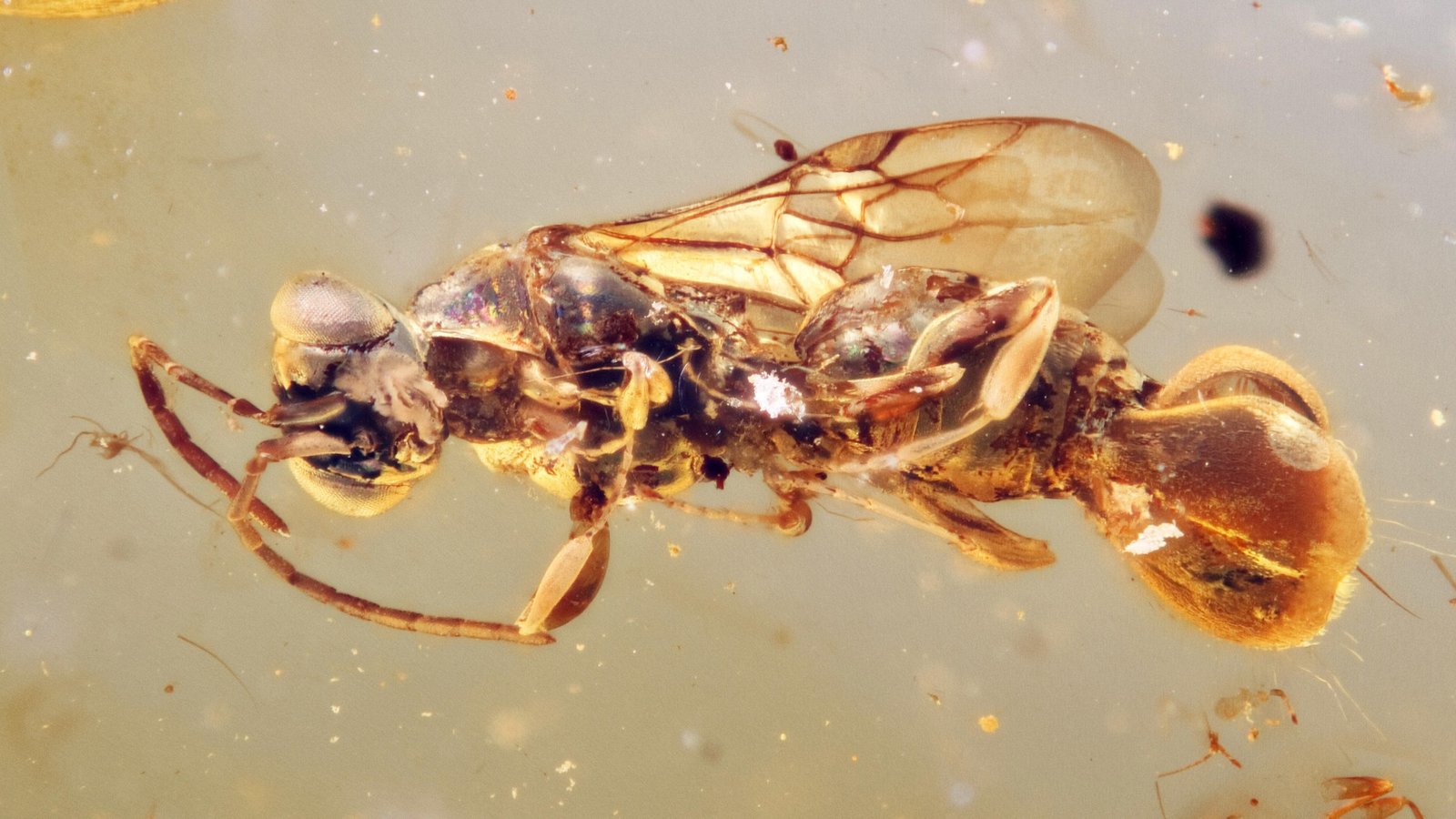Prehistoric insects preserved in amber offer insights into an evolutionary path that came to a halt after the mid-Cretaceous era. Researchers studying ancient specimens, approximately 99 million years old, have uncovered fascinating details about an extinct wasp species. This species, known as Sirenobethylus charybdis, had distinctive Venus flytrap-like abdominal appendages used for capturing prey and laying eggs inside them. The findings of this study were published in BMC Biology on March 26.
Among all known insects, around 10 percent are parasitoids, which develop inside host organisms before eventually killing them. However, the unique features of S. charybdis set it apart from modern parasitoid insects. Through the analysis of 16 well-preserved female specimens found in Myanmar, researchers suggest that this ancient wasp species may belong to a previously undiscovered insect family. The distinct hind wing vein patterns of S. charybdis differ significantly from the Chrysidoidea superfamily that includes present-day cuckoo and bethylid wasps.
Apart from its unique hind wings, S. charybdis also possessed a three-flapped abdominal structure resembling a Venus flytrap’s leaves. The lower flap, shaped like a paddle, featured hair-like bristles that were particularly distinctive.
The researchers noted that the abdominal apparatus of Sirenobethylus was unlike anything seen in modern wasps or insects. In their study, they proposed two theories to explain this unique anatomy. The first theory suggested that the jaw-like flaps were used by females to grasp males during mating, although the absence of male specimens for study made this hypothesis uncertain.
The researchers then proposed a more intriguing explanation. It is possible that S. charybdis used its appendages to capture prey, immobilize them, and lay eggs inside. This behavior would allow the wasp to wait for a more mobile insect to come into contact with the bristles on the abdominal flap, triggering a response that would lead to the prey being trapped. With its stinger positioned on the middle flap, S. charybdis may have injected the trapped larvae host during this process.
The exact extinction timeline of this unique wasp species remains unknown, as does the reason for the disappearance of this appendage in later insect species. Nevertheless, the discovery highlights the early development of parasitoid strategies in some Chrysidoidea species during the mid-Cretaceous period. For however long it roamed the Earth, S. charybdis lived up to its mythological namesake, resembling Charybdis, the legendary sea monster from The Odyssey that awaited unsuspecting sailors.
